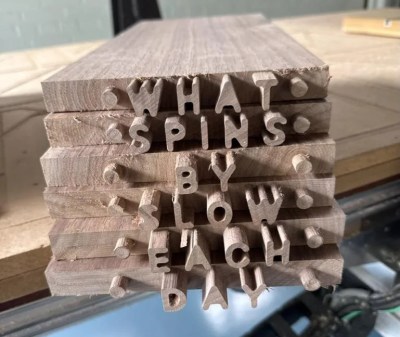It’s easy to build big wooden furniture if you have a massive industrial CNC router, but few of us are so lucky. However, you can still build sizable stuff with a smaller router if you know what you’re doing. [Aribabox] shares some useful tricks and techniques for building large workshop cabinets on smaller machines.
The key to doing this well is modularity. [Aribabox] shows off how to build excellent workshop drawers in pieces using a stackable design. Rather than having to cut out one huge side panel to cover the whole stack of drawers, each drawer can have its own side panel that easily fits on a smaller router. They can then be stacked into a stout assembly that still does its job perfectly well. Assuming your CNC router is trued up properly, you can whip up a lot of furniture quickly, just assembling everything with screws. You’ll still be able to work faster and make bigger things easier on a big machine, but a small machine can do a lot more than you think.
[Aribabox] supplies design files for a cost if you’re eager to replicate their work. If that doesn’t suit you, you can always just use the video as inspiration to work on your own modular furniture designs instead. We’ve featured other modular furniture designs before, too, that rely on 3D printed and lasercut components.
Continue reading “How To Make Big Cabinets On A Small CNC Router”

















